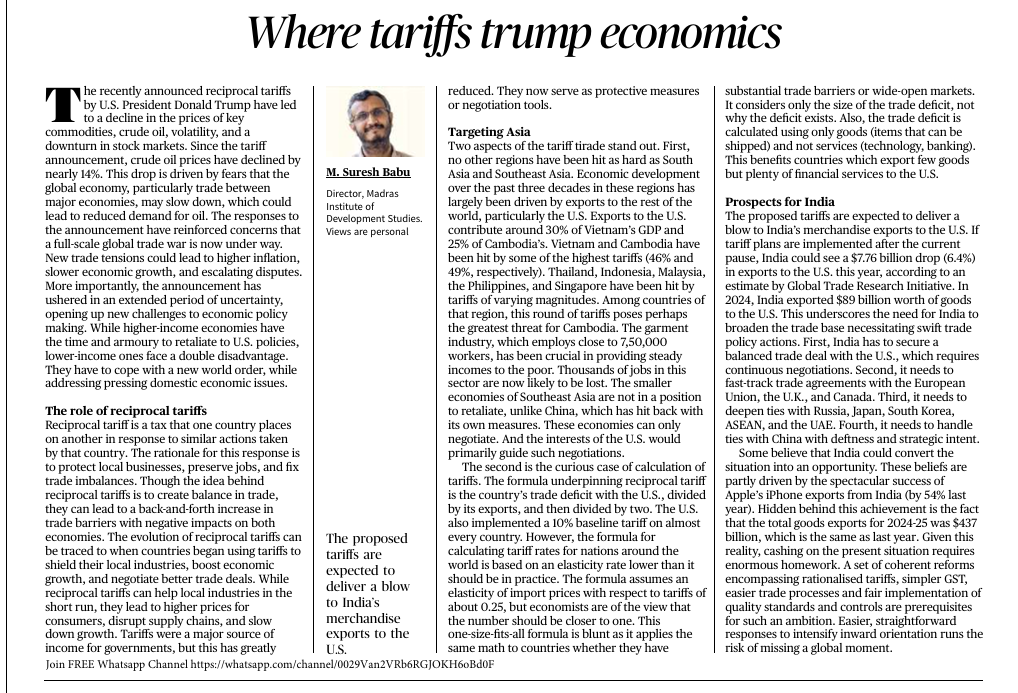1. Context:
- The editorial discusses the global impact of reciprocal tariffs announced by the U.S. under President Donald Trump, especially on developing Asian economies and India.
- It critiques how protectionist trade measures are being prioritized over economic logic.
2. Key Themes & Points:
A. Understanding Reciprocal Tariffs:
- Definition: A tax imposed by one country in response to a tariff placed by another country.
- Purpose: To correct trade imbalances, protect local industries, and preserve domestic jobs.
- Risks:
- May lead to trade wars.
- Higher costs for consumers, inflation.
- Disruption of global supply chains.
- Adds uncertainty to global trade and economy.
- May lead to trade wars.
B. Impact on Global Economy:
- Post-announcement, crude oil prices dropped by 14%, reflecting fear of a slowdown.
- Could usher in slower growth, higher inflation, and economic fragmentation.
- Challenges for:
- High-income countries: Have resources to retaliate.
- Low-income countries: Disproportionately impacted, cannot respond effectively.
- High-income countries: Have resources to retaliate.
C. Targeting Asia:
- Many Asian countries, such as Vietnam, Cambodia, Thailand, Indonesia, and Malaysia, rely heavily on exports to the U.S.
- Their economic models—export-driven growth—face threats due to tariffs.
- Example: Vietnam’s garment exports heavily depend on the U.S.; similar risks to Philippines and Singapore.
D. Flawed Logic of Tariffs:
- S. calculation of trade deficits is goods-only, ignoring services like IT, banking, which benefit the U.S.
- This makes the basis of reciprocal tariffs questionable.
- Protectionism is replacing multilateral negotiations with unilateral decisions.
3. Implications for India:
A. Immediate Impact:
- India’s exports to U.S. may decline by $7.76 billion (6.4%) if tariffs are implemented.
- In 2024, India exported $89 billion worth of goods to U.S.
B. Strategic Response Required:
- Balanced Trade Deal with U.S. through continuous negotiations.
- Fast-track FTAs with EU, UK, Canada.
- Deepen ties with Russia, Japan, South Korea, ASEAN, UAE.
- Engage China on strategic and defence terms.
C. Potential Opportunity:
- India could gain from Apple’s diversification strategy (54% rise in iPhone exports from India).
- India’s total tech goods exports expected at $437 billion by 2025.
- But to benefit, India needs:
- GST reforms,
- Simplified trade procedures,
- Stringent quality standards,
- Stable policy orientation.
- GST reforms,
GS Paper II – International Relations
- “Reciprocal tariffs signal a shift from multilateralism to economic nationalism.” In this context, examine the implications of rising protectionist policies by developed countries on India’s trade diplomacy.


